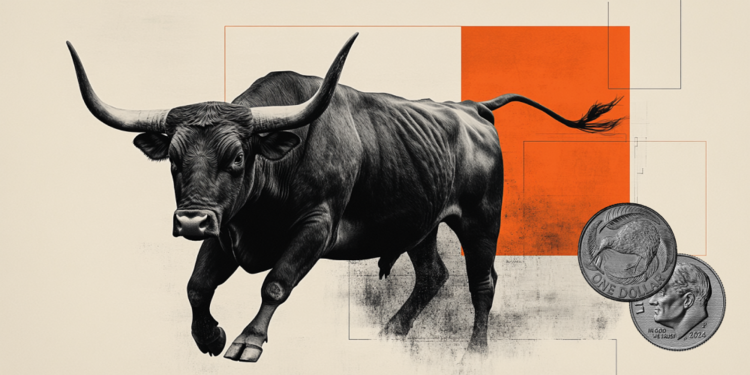- NZD/USD gains ground to near 0.6015 in Tuesday’s early Asian session.
- Trump said he was still open to further negotiation and pushed off increased duties until at least August 1.
- Financial markets believe the RBNZ will pause its easing cycle on Wednesday after six consecutive rate reductions since August last year.
The NZD/USD pair recovers some lost ground to near 0.6015, snapping the four-day losing streak during the Asian session on Tuesday. The New Zealand Dollar (NZD) edges higher against the Greenback as US President Donald Trump suggested that he was still open to additional negotiations and pushed off increased duties until at least August 1.
Trump announced the first in a wave of promised letters that threaten to impose higher tariff rates on key trading partners. Nonetheless, Trump hinted at the possibility of additional negotiations and delays, saying the August 1 deadline was “not 100% firm” and signaling he remained open to continuing to tweak the rates. Optimism from Trump’s announcement provides some support to the riskier assets like the Kiwi.
The Reserve Bank of New Zealand (RBNZ) has been in an aggressive rate-cutting stance since it started last August, reducing the Official Cash Rate (OCR) by 225 basis points (bps) from 5.5% to 3.25%, including three 50 bps cuts. The RBNZ interest rate decision will take center stage later on Wednesday. The New Zealand central bank is anticipated to hold OCR unchanged at the July meeting. According to the Reuters poll, the median forecast shows just one more 25 bps reduction this year compared with two in a May survey.
RBNZ FAQs
The Reserve Bank of New Zealand (RBNZ) is the country’s central bank. Its economic objectives are achieving and maintaining price stability – achieved when inflation, measured by the Consumer Price Index (CPI), falls within the band of between 1% and 3% – and supporting maximum sustainable employment.
The Reserve Bank of New Zealand’s (RBNZ) Monetary Policy Committee (MPC) decides the appropriate level of the Official Cash Rate (OCR) according to its objectives. When inflation is above target, the bank will attempt to tame it by raising its key OCR, making it more expensive for households and businesses to borrow money and thus cooling the economy. Higher interest rates are generally positive for the New Zealand Dollar (NZD) as they lead to higher yields, making the country a more attractive place for investors. On the contrary, lower interest rates tend to weaken NZD.
Employment is important for the Reserve Bank of New Zealand (RBNZ) because a tight labor market can fuel inflation. The RBNZ’s goal of “maximum sustainable employment” is defined as the highest use of labor resources that can be sustained over time without creating an acceleration in inflation. “When employment is at its maximum sustainable level, there will be low and stable inflation. However, if employment is above the maximum sustainable level for too long, it will eventually cause prices to rise more and more quickly, requiring the MPC to raise interest rates to keep inflation under control,” the bank says.
In extreme situations, the Reserve Bank of New Zealand (RBNZ) can enact a monetary policy tool called Quantitative Easing. QE is the process by which the RBNZ prints local currency and uses it to buy assets – usually government or corporate bonds – from banks and other financial institutions with the aim to increase the domestic money supply and spur economic activity. QE usually results in a weaker New Zealand Dollar (NZD). QE is a last resort when simply lowering interest rates is unlikely to achieve the objectives of the central bank. The RBNZ used it during the Covid-19 pandemic.

